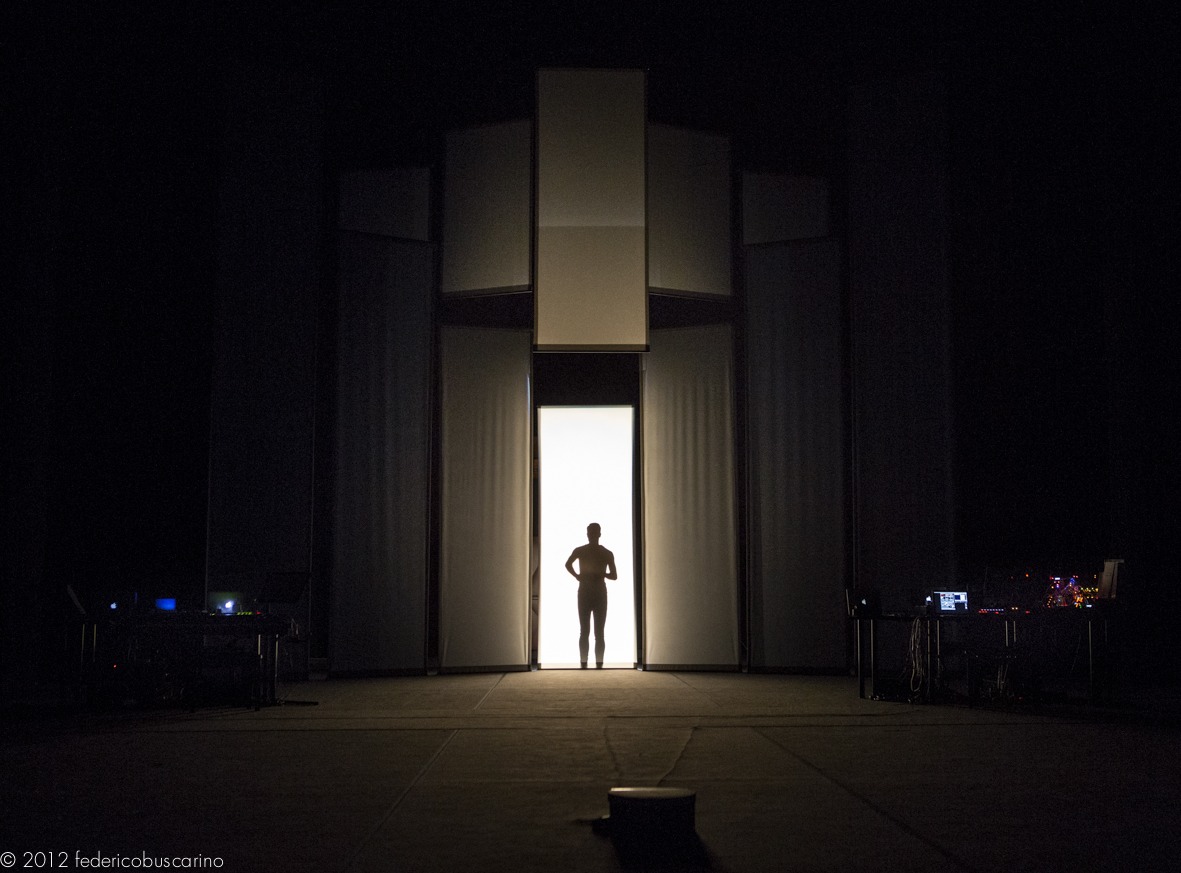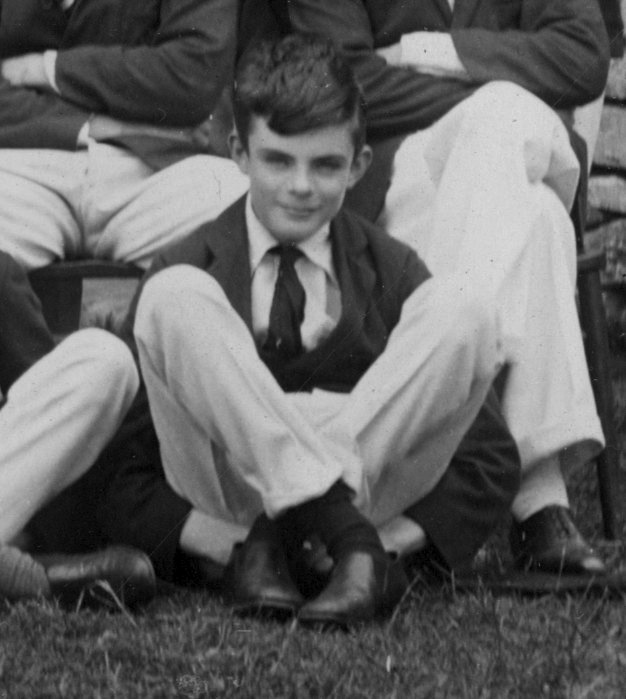
1926 SHERBORNE
“Dear Mother & Daddy,
on ship found that all railway services were cancelled… so I cycled as programme left luggage with baggage master started out of docks about 11 o’clock got map 3/- including Southampton missing Sherborne by about 3 miles. …”
From a letter by Alan Turing sent to parents. May 5th, 1926
PROLOGUE
In the prologue the scenic environment, in which the multimedia action will be developed, is shocasted to the audience.
A perfomer ensemble take place to their own consolle, and play a computer generated music score interacting in real time with the actors.
Actor’s heartbeat and breathing dictate the rhythm of the show. The stage space becomes an extension of the interior space of the actor and Turing himself.
Kronos, the time that accompanies Turing, ahead of his times, in the scan of his time, is presented.
THE FACT
Alan Turing, still a boy, cyclings along a route of 60 miles to reach Sherborne on the first day of school. It is in this period that Turing began to show interest in science in relation to the secrets of nature and biology. Turing dedicated to the study of the human brain and the electronic brain, researching the basic mechanisms of thought and reasoning.
THE SCENE
A landscape, accompanied by real travel sounds reworked in musical form, is presented. The show and the entire scene come to life through the presence of a symbolic human-electronic brain, the sound generated by the mixture of digital sound elements (computer) and natural (organ) emphasizes and amplifies the data produced by the heartbeat and the breathing of the actor.
I DOCUMENTS
- Letter by Alan Turing, May 5th, 1926, sent to parents. Preserved in the Cambridge King’s College archives.
- Quote from “Natural Wonders” di Edwin Tenney Brewster
SANDRO MUSSIDA. PROLOGUE
MICHELE TADINI. SHERBORNE
FRANK CARTER. BICYCLE, GAS MASK AND CUP OF TEA
Frank Carter, specialista della storia dei codebreakers, è autore di pubblicazioni sul codebreaking edite dal museo di Bletchley Park presso il quale tiene regolarmente delle conferenze.
DALLA LETTERA DI ALAN AI GENITORI
(Conservata nell’archivio del King’s College di Cambridge)
Mercoledì 5 maggio 1926, Westcott House
Sherborne – Dorset
Cari mamma e papà,
sulla nave ho saputo che tutti i servizi ferroviari, a causa di uno sciopero, sarebbero stati cancellati, ho programmato di partire in bicicletta. Depositati i bagagli sono partito dal porto a ore 11… acquistato per 3 scellini una cartina che include Southampton ma esclude Sherborne per circa 3 miglia. Annotato a ovest la posizione di Sherborne, appena fuori dalla cartina. Ho molto faticato a trovare un ufficio postale, spedito telegramma al direttore della scuola, uno scellino.
Trovata officina meccanica, alcuni lavoretti alla bicicletta: 6 pence. Partito a mezzogiorno, spuntino dopo 3 miglia: 3 scellini e 6; percorse altre 3 miglia giunto a Lyndhurst: comprato una mela 2 pence. Ho continuato per 8 miglia sino a Beerley , qui riparazione pedale storto: mezzo scellino; altre 4 miglia arrivato a Ringwood.
Le strade di Southampton erano gremite di scioperanti. Viaggio suggestivo, dapprima nel New Forest, poi lungo una campagna arida sino a Ringwood e quindi di nuovo pianura fino a Wimborne. Verso Blandford agevoli discese, seguite da strada ondulata per quasi tutto il viaggio, tranne per l’ultimo chilometro in ripida discesa. Arrivato alla Public School di Sherbourne.
Vostro aff.mo figlio Alan
Testo da Natural Wonders di Edwin Tenney Brewster
“Si dice che pensiamo col cervello. Il che è vero! Ma c’è anche dell’altro. Il cervello è formato da due metà, esattamente identiche, come il resto del corpo. In realtà le sue due parti sono ancora più simili delle due mani. Nonostante questo, il nostro pensiero ha origine da una parte sola del cervello”
da Natural Wonders di Edwin Tenney Brewster, uno dei libri preferiti dal Turing ragazzo
This content is also available in / Questo contenuto è disponibile anche in : Italian

